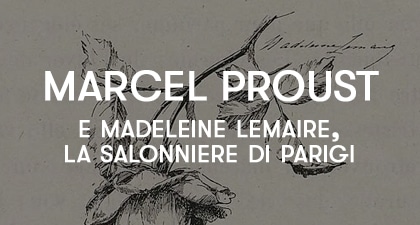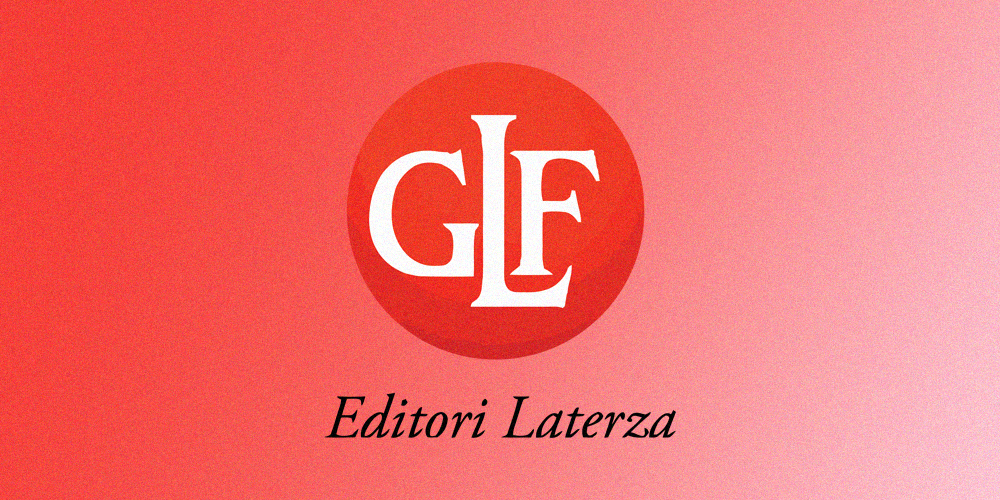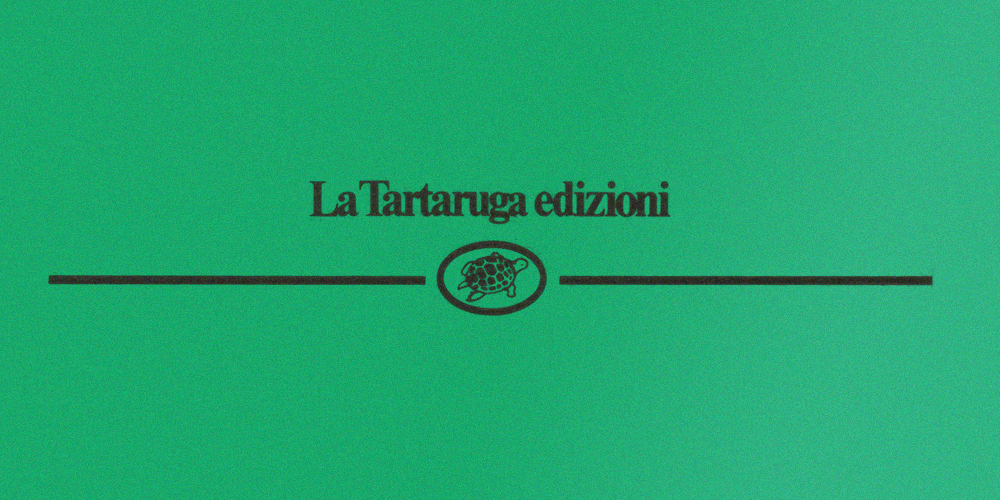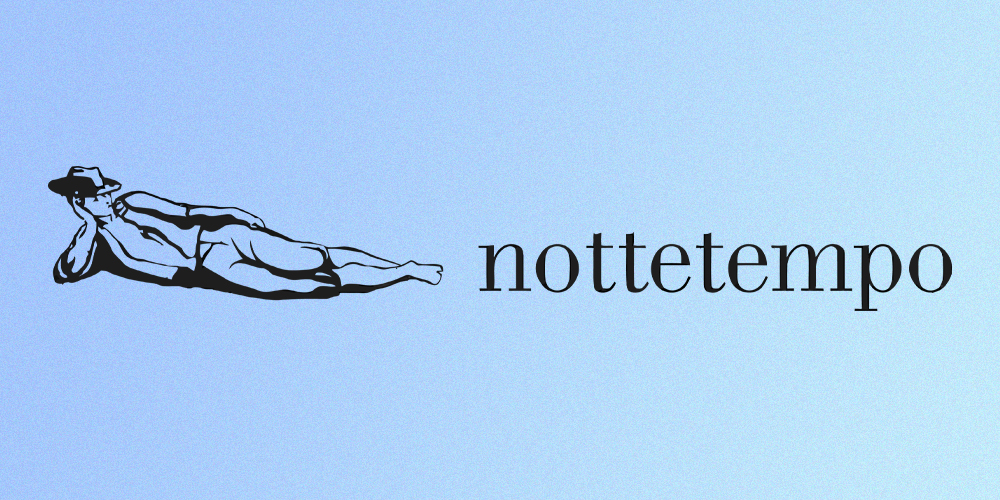
The twelfth publishing house of our journey is Arnoldo Mondadori Editore.
The logo is the key element and was created by combining the initial letters of Arnoldo Mondadori, the founder of the publishing house. The logo was formalized in 1969 by Dutch designer Bob Noorda, following a long evolution that began in the 1920s.
The history of the Mondadori publishing house is a significant part of Italy’s 20th-century history.
The editorial activity began in Ostiglia, in the province of Mantua, in 1907.
Its first publication was a “popular-informative” periodical, *Luce!*. In 1911, Arnoldo met Tomaso Monicelli (father of the famous director Mario Monicelli), and together they founded “La Sociale,” an initial stage of what would later become the Mondadori publishing house. Arnoldo and Tomaso began working on an editorial series aimed at school-age children, with the goal of publishing educational books—readings to accompany school texts.

In 1912, they published their first book, *Aia Madama*, a collection of short stories written by Monicelli, followed the next year by *Il piccolo viandante*, also written by Monicelli. The series was called “La Lampada.”
It was a series of small books for children, brilliantly illustrated by the magnificent drawings of Antonio Rubino, Bruno Angoletta, and Filiberto Scarpelli. During the war years, “La Lampada,” along with a few isolated theater volumes and two or three works outside the series, constituted the entire Mondadori production.
Overall, the series lasted fifteen years and continued until 1927. Seventy-six volumes were published, while the new, unnumbered series included thirteen titles, some of which were simple reprints.
During the First World War, Arnoldo Mondadori had the idea for an illustrated magazine for the troops at the front.
He launched *La Tradotta*, which met with good success. *La Tradotta* was joined by *La Ghirba*, which featured contributions from famous painters and writers, including Soffici, De Chirico, and Carrà.

At the same time, he expanded the publishing business by publishing important names in national literature. In 1917, he moved his publishing house to Verona, where he purchased the Gaetano Franchini printing press, and by the end of 1919, he opened a new managerial office in Milan.
The 1920s were a period of intense growth.
In 1921, Mondadori managed to strike a deal with industrialist Senator Borletti, which provided more stable access to credit and an organic relationship with the new political classes of the emerging fascist regime. On May 31 of that year, Borletti, who had entered the company with a significant capital influx, became the president of the new Arnoldo Mondadori Editore based in Milan, with Mondadori himself becoming the managing director. Borletti held the presidency until his death in 1939.

In 1920, *Le Grazie* began its publications, continuing until 1924. It was the first fiction series created by Arnoldo Mondadori, marking the official entry into the national book market. *Le Grazie* was born from the meeting between Arnoldo Mondadori and Virgilio Brocchi, one of the most-read writers of the time, who helped bring authors such as Marino Moretti, Alfredo Panzini, Corrado Govoni, Ada Negri, and others into the series catalog.
In 1926, another prestigious series, *Le scie*, was launched, and it remains active to this day. It was initiated by Enrico Piceni, who was the head of the publishing house’s press office at the time.
Also in the same year, the *Romanzi* series was published, which continued until 1945, featuring the most important authors of the time: Virgilio Brocchi, Massimo Bontempelli, Giuseppe Antonio Borgese, Annie Vivanti, Liala, Sibilla Aleramo, Filippo Tommaso Marinetti, Antonio Fogazzaro, Luigi Pirandello, Giovanni Verga, and others.
Another successful initiative was the creation of the *I libri Gialli* series. During its thirteen-year existence, which ended in 1941, nearly all the major authors of the genre were featured, such as R.L. Stevenson, Agatha Christie, A.K. Green, A.E.W. Mason, and others. Starting in the 1930s, Mondadori’s activity materialized with the publication of a series of important collections, some of which represented the true beginning of the popular publishing policy that Arnoldo had always envisioned from the outset. These included *I Libri Azzurri* (1930-1936), which offered works by the most important Italian authors at affordable prices, directed by Lorenzo Montano.
Another series, *I libri Verdi* (1932-1941), was launched, which marked a profound revolution in editorial terms. These books had the merit of being affordable, costing only a few lire, making them accessible to the pocket of a high school student of that time.
In those years, the “Biblioteca Romantica” (1931-1942) and “I Romanzi della Palma” (1932-1943) were also released, a series that anticipated the role that the “Medusa” would later play in contemporary foreign literature. It is important to emphasize that the selection of works to be published was entrusted to a small group of specialists in modern literature (Lavinia Mazzucchetti, Enrico Piceni, Giacomo Prampolini, Cesare Giardini, Fernando Palazzi), alongside a bookseller, a journalist, a student, a young graduate, and a professional.
Later, after securing the rights from the Bemporad publishing house, Mondadori published “Tutto il Teatro di Pirandello” (1933-1938), and in the same year, the new series of “Gialli Economici” (1933-1942) was released, which contributed to the popular success of the detective genre, already experimented with in the previous series “I libri gialli.” This series later served as a model, in the immediate post-war period (1946), for the creation of “I libri gialli Nuova serie,” which then continued under the more well-known name “Gialli Mondadori” until today.
Starting from 1933, the publisher’s catalog underwent a profound transformation with the massive entry of contemporary foreign fiction into Mondadori’s production.
In that year, “Medusa” (1933-1971) was born, designed by graphic designer Angoletta, which marked the publication of novels by Mauriac, Zweig, Mann, Hesse, Lawrence, Huxley, Gide, Woolf, etc., to which American authors like Dos Passos, Lewis, and Faulkner were later added. The “Medusa” inspired other major cultural editorial initiatives, such as the “Quaderni della Medusa” (1934-1967) and the “Medusa degli Italiani” (1947-1961). After several years of interruption, this series was revived at the end of the 1970s with “Medusa Serie ’80” (1979-1983).

In 1935, an agreement was signed for the transfer of Disney production rights to Mondadori, including the weekly “Topolino”.
Already published since late 1932 by the Nerbini publishing house in Florence, it passed under the Milan-based publisher’s name, marking the beginning of a successful collaboration between Arnoldo Mondadori and Walt Disney.

In 1937, a company was created to manage the Mondadori bookstore in Galleria Vittorio Emanuele in Milan.
In 1937, another important series was launched, still active today, the “Omnibus” series, which offered bound volumes that combined the quality of titles with the popularity of the content, making them both a pleasant reading experience and a high-quality gift item. The “Omnibus” series, with stunning covers designed by Giorgio Tabet, immediately gained great success.
In the field of magazines, in 1939, “Tempo” was published. A magazine created by Arnoldo and his son Alberto, followed, in the post-war years, by “Epoca”.
In 1940, at the initiative of the young Alberto Mondadori and Arturo Tofanelli, “Lo Specchio” was launched, one of the most prestigious and representative collections of contemporary Italian poetry, which also included Jewish authors and marked Mondadori’s radical break from fascism.

During the Second World War, all activities of the publishing house and the Verona workshops were seized, most of the equipment was dismantled and transferred to Germany. The Milan headquarters was bombed, and the editorial staff was forced to take refuge in Arona under the control of fascist commissioners. After the war, Arnoldo Mondadori returned from Switzerland, where he had taken refuge with his family, and resumed control of the company, starting the reconstruction phase.
In the post-war years, Mondadori began a process of expansion that would bring it to the top of Italian publishing. As a result, on September 10, 1946, Alberto Mondadori was appointed General Co-director of the publishing house.
New corporate structures began to take shape in the 1950s, and through the appointment of key personnel, we can get a snapshot of the complex structure Mondadori was developing. On November 27, 1953, Sergio Polillo was appointed Director responsible for the Presidency; Alberto Mondadori became General Director responsible for all editorial production; Giorgio, also Arnoldo’s son, was appointed General Director with specific responsibility for industrial management and the administrative and financial aspects of the entire group.
In 1958, Alberto began a personal publishing venture with the foundation of “Il Saggiatore”.
In the early 1960s, Mondadori established the Cartiera di Ascoli, in which AME held a 75% stake, while the remaining share was owned by the company “Anstaltpresse Anzsyndikat”, to secure a steady supply of paper.
In 1960, the company called “Club degli editori” was founded for mail-order sales of editorial products, and another company, “Auguri Mondadori”, was created for the production and sale of postcards and greeting cards.
In 1962, a new partnership with “Time-Life” was established for the publication of the new magazine “Panorama,” and in 1965, the magazine became entirely owned by AME.
In 1965, preceded by numerous programs and an intense advertising campaign, Mondadori embarked on an adventure that would change the face of Italian publishing for many years to come.
The “Oscar” series was born, which, still thriving today, helped and continues to contribute to the success of the publishing house.

In April 1965, newsstands across Italy were literally flooded with small paperback booklets; for 350 lire, they offered the best of world literature in excellent editions. For the first three years, only fictional texts were published in the series. Over the years, the “Oscar” series has become a real division of the publishing house, with several sub-series such as “Oscar Essays”, “Oscar Bestsellers”, “Oscar Classics”, etc.
In 1967, a decision was made to absorb the activities of “Il Saggiatore” into Mondadori, which had been operating independently since its founding in 1958 but had been autonomous until 1962. However, this merger did not take place. Alberto left AME and regained full autonomy as a publisher at “Il Saggiatore”, renaming it “Il Saggiatore di Alberto Mondadori”; however, he had to give up his position as general director of the publishing sector, a position taken by Arnoldo.
In 1969, a new series was launched, which remains one of the most prestigious and certainly of high cultural standing, “I Meridiani”. The aim was to create an “Ideal Library” open to various expressions of world-class literature.
The name was proposed by Vittorio Sereni to the editorial committee, then chaired by Alberto Mondadori, and in “I Meridiani” found a home for all the “contemporary” classics.
In the 1970s, the group’s expansion continued after the acquisition of two new printing facilities in Vicenza and San Donato Milanese. In 1973, a new factory was planned in Cles (TN), and the following year, AME moved from its Via Bianca di Savoia headquarters to the new, now-completed location in Segrate, where it is still located today.
In 1976, another important Mondadori series was launched, “I Libri Illustrati”, which is still active today.
A series born from the new role that the image now plays, no longer seen as complementary to traditional content but as a “text” in itself.
The 1980s marked another major leap forward for AME, making it one of the largest publishing houses in Italy. 1982 saw AME enter the television sector with “Rete Quattro”, later sold to the Fininvest group in 1984.
These were the years of acquisitions.
In 1983, 50% of “Sperling & Kupfer Editori” was acquired, in 1984, 50% of “Edizioni Frassinelli”; in 1985, 51% of “Edizioni Comunità” was acquired. On October 19, 1984, Leonardo Mondadori became Vice President and Franco Tatò was appointed CEO, who would resign in 1986. The following year, after the death of Mario Formenton, Cristina Mondadori became a director, and Sergio Polillo was appointed president. Also in 1986, “Il Saggiatore” was merged into AME, but the brand remained with the heirs, who granted its use.
In 1988, 50% of “Riccardo Ricciardi Editore S.p.A.” and 90% of “Serra e Riva Editori S.r.L.” were acquired.
During 1990, AME would acquire the entire shareholding of both publishing houses. Also in 1988, new controlled companies were founded, including “Mondadori Informatica”, which would manage the publications PCWeek and Zerouno. During this period, the company “Elemond” was established, consolidating the activities of the Electa publishing house, and in the first half of 1989, the structure of the Elemond group took shape. This company, which holds the majority of Einaudi, saw AME transfer the Arnoldo Mondadori Arte and Arnoldo Mondadori per la Scuola to it.
At the end of 1989, the ascent of the Fininvest group of Silvio Berlusconi began. On January 25, 1990, Silvio Berlusconi was appointed Chairman of the Board of Directors.
In 1993, the “Il Saggiatore” brand was brought back outside AME by Luca Formenton and became an independent publishing house once again, still active and productive today.
Currently, Arnoldo Mondadori Editore is the largest publishing group in Italy, consisting of over fifty controlled and affiliated companies, both domestic and international. The group’s activities are divided into five sectors: Books, Magazines and Advertising, Printing, Direct Marketing, Information Technology, and New Media.
We can say that Arnoldo laid very solid foundations for this large publishing group. He was an optimistic, vital, ironic, authoritative, tireless worker, always on alert, and frugal.
His publishing adventure took giant steps, but curiously, he never made one step longer than his leg.
“It was a kind of moral imperative for dad: never exaggerate, never take risks, never waste. He was a man of rigor, in everything. Before making a decision at work, he would reflect for a long time. Everything had to be done with care and frugality,” writes his daughter Mimma in her book “A Typography in Paradise”.
See all the books published by Arnoldo Mondadori Editore and many more available in our catalog.
Would you like to discover more stories about Italian publishing houses?
Here you can find all our articles.








